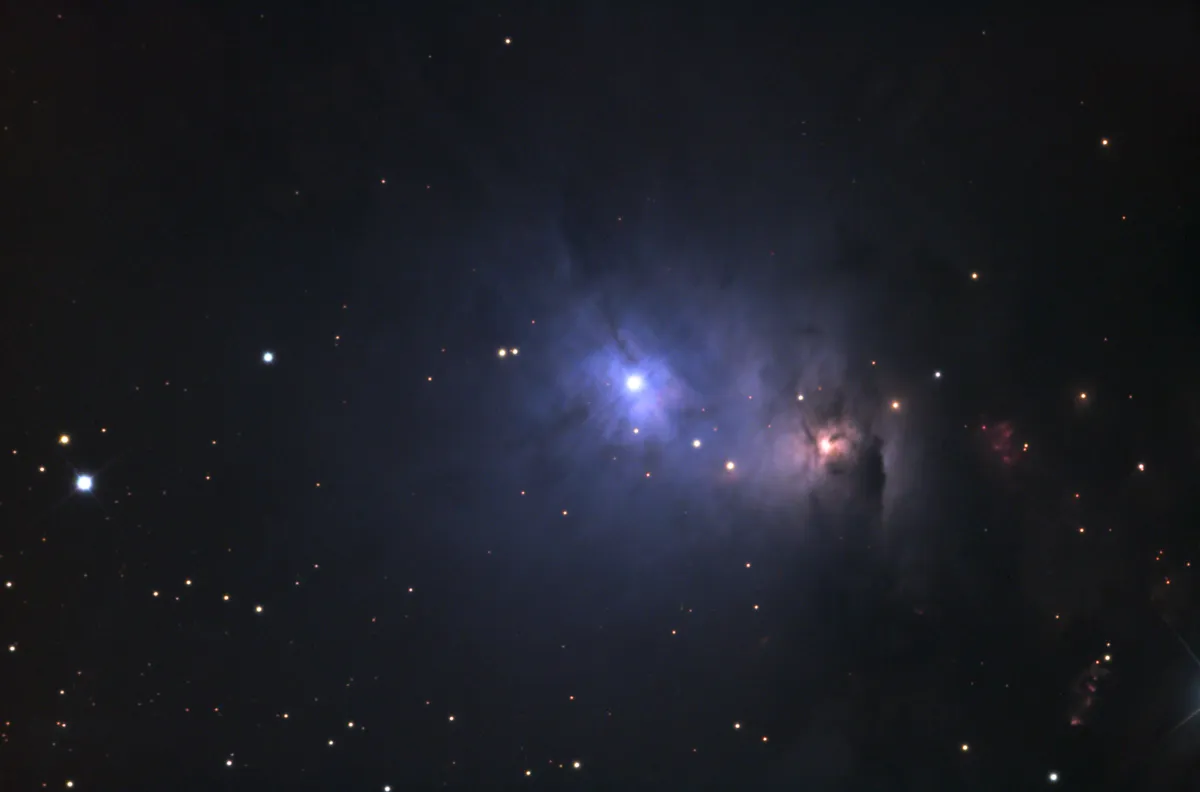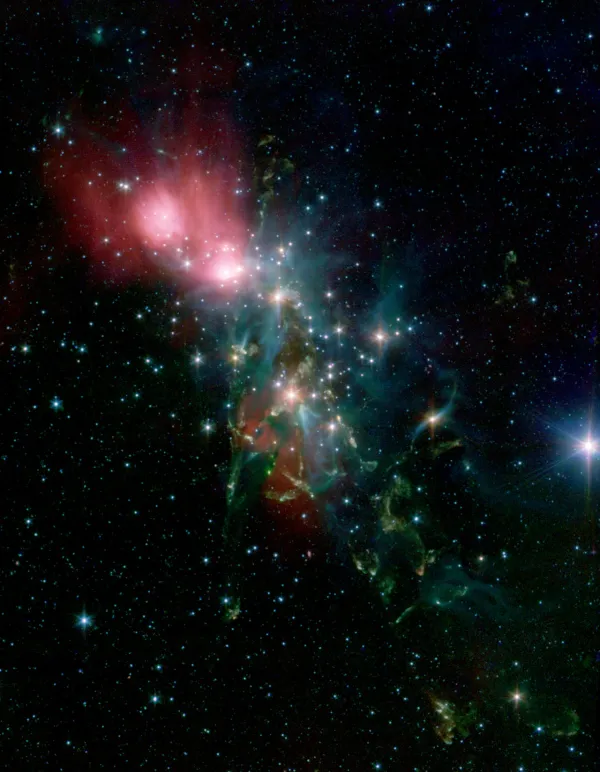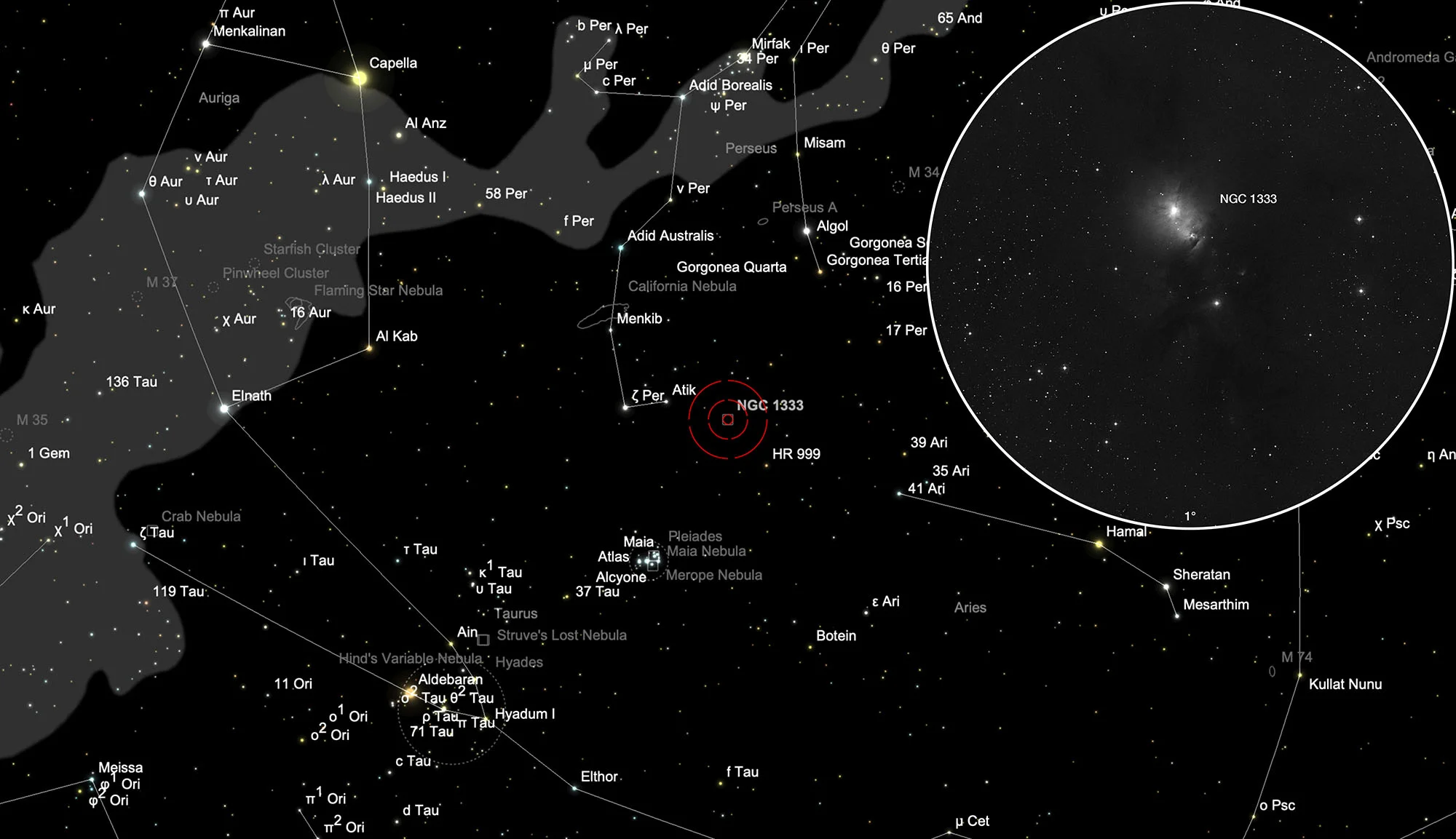Embryo Nebula (NGC 1333)

History
The galactic nebula NGC 1333 was discovered on 31 December 1855 by the German astronomer Eduard Schönfeld. The nebula has been the subject of much research. The earliest goes back to Edwin Hubble in 1922. [196, 336]
Physical Properties

NGC 1333 is a bright reflection nebula and is currently the most active area of star formation in the western part of the Perseus molecular cloud. The nebula mainly reflects the light of the B8 spectral class star BD +30°549. It is also home to an open cluster of around 150 young stars with a mean age of one million years and around 100 solar masses, which is divided into two subgroups. The reflection nebula is associated with the dark cloud L1450, also known as Barnard 205. A CO emission cloud extends from there about 1° to the south. The surrounding molecular cloud contains numerous cavities with filaments of dense gas, which, due to the stellar winds, point away from the most active centres of star formation. The molecular mass of the NGC 1333 region is estimated to be around 450 solar masses and the distance to be around 300-350 parsecs (around 980 to 1100 light years). [336, 351]
| Designation | NGC 1333 |
| Type | RN |
| Right Ascension (J2000.0) | 03h 29m 18.0s |
| Declination (J2000.0) | +31° 25' 00" |
| Diameter | 6 × 3 arcmin |
| Metric Distance | 0.296 kpc |
| Dreyer Description | F, L, * 10 nf (Auw No 17) |
| Identification, Remarks | GC 710; LBN 741 |
Finder Chart
The galactic nebula NGC 1333 is located in the constellation Perseus. The best time to observe is July to April, when the circumpolar constellation is highest at night.
Visual Observation
400 mm aperture: With a 21 mm Ethos eyepiece (85x) and without a filter, only a very faint, elongated, diffuse spot without any structure around the star is barely recognizable. The position can be easily identified from the surrounding stars, since the area there is relatively poor in stars. With an O-III or H-beta filter, nothing can be seen of the nebula. This suggests a reflection nebula. With a 9 mm Nagler eyepiece (200x) the nebula remains weak and diffuse and without structure. You can see a few faint asterisks in the diffuse something. The object is not visually appealing. — Taurus T400 f/4.5 Dobsonian, Hasliberg Reuti, 6. 11. 2021, Bernd Nies
